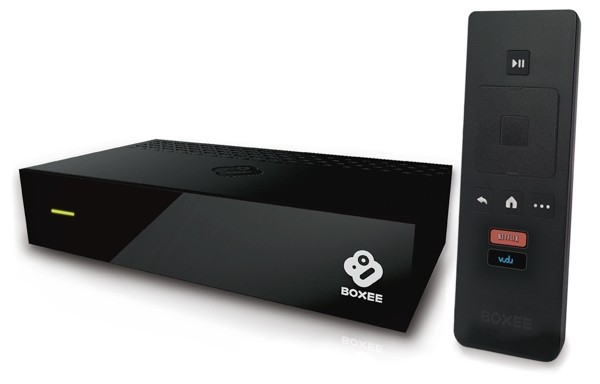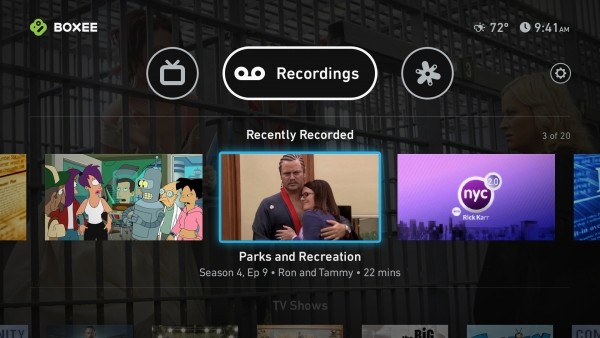Boxee has officially announced the successor to its oddly-shaped set-top box for online and local video streaming. As detailed in a leak last week, the new Boxee TV merges over-the-air live TV broadcasts, online content and DVR functionality in a single device – but with a twist. It turns out instead of going with local storage as initially thought, the company has turned to the cloud to provide unlimited storage, for a monthly fee.
The Boxee TV comes with a built-in antenna that can pick up over-the-air HD broadcasts from channels like ABC, Fox, NBC, and CBS – provided you are within the coverage area. There's also a coaxial cable input which takes a direct HD signal from an antenna or basic cable package and passes it to the TV via HDMI.

With a $15 per month subscription you can record either signal – or both at the same time – and the Boxee TV will instantly upload the content via Wi-Fi or Ethernet into a storage locker on the Internet. According to Boxee CEO Avner Ronen, you could record all day, every day and not hit any kind of storage limit. You can then access the content through the Boxee TV at a later time or any other device with a web browser.
The DVR service will initially be available in New York City, Los Angeles, Chicago, Dallas, Houston, Atlanta, Philadelphia, and Washington D.C. Additional markets will launch next year.

The ability to stream content from online sources is still there, of course, but the company has cut down the number of available apps in an effort to streamline the Boxee experience. The initial lineup includes Netflix, Vudu, YouTube, Vimeo and Pandora. Local streaming via the local network or USB will still be fully supported.
Besides ditching the original's angular design for a more conventional rectangular shape Boxee changed a few other things under the hood. Namely, the company switched from Intel to a Broadcom processor, and now uses a customized embedded Linux solution instead of the code base of the XBMC project.
Available starting November 1, the new Boxee TV also brings the cost down to just $99 from $180 for the old model, positioning itself in the same price range as the Apple TV and Roku 2 XS.